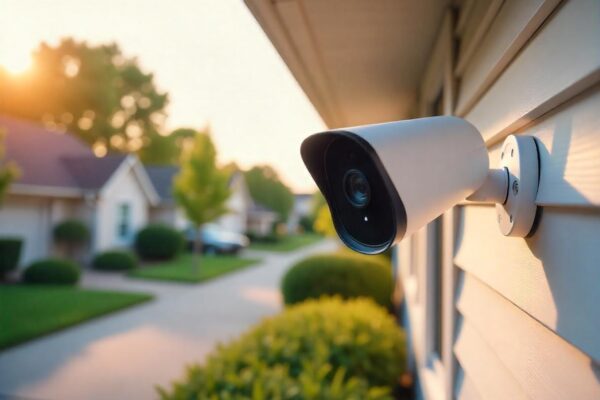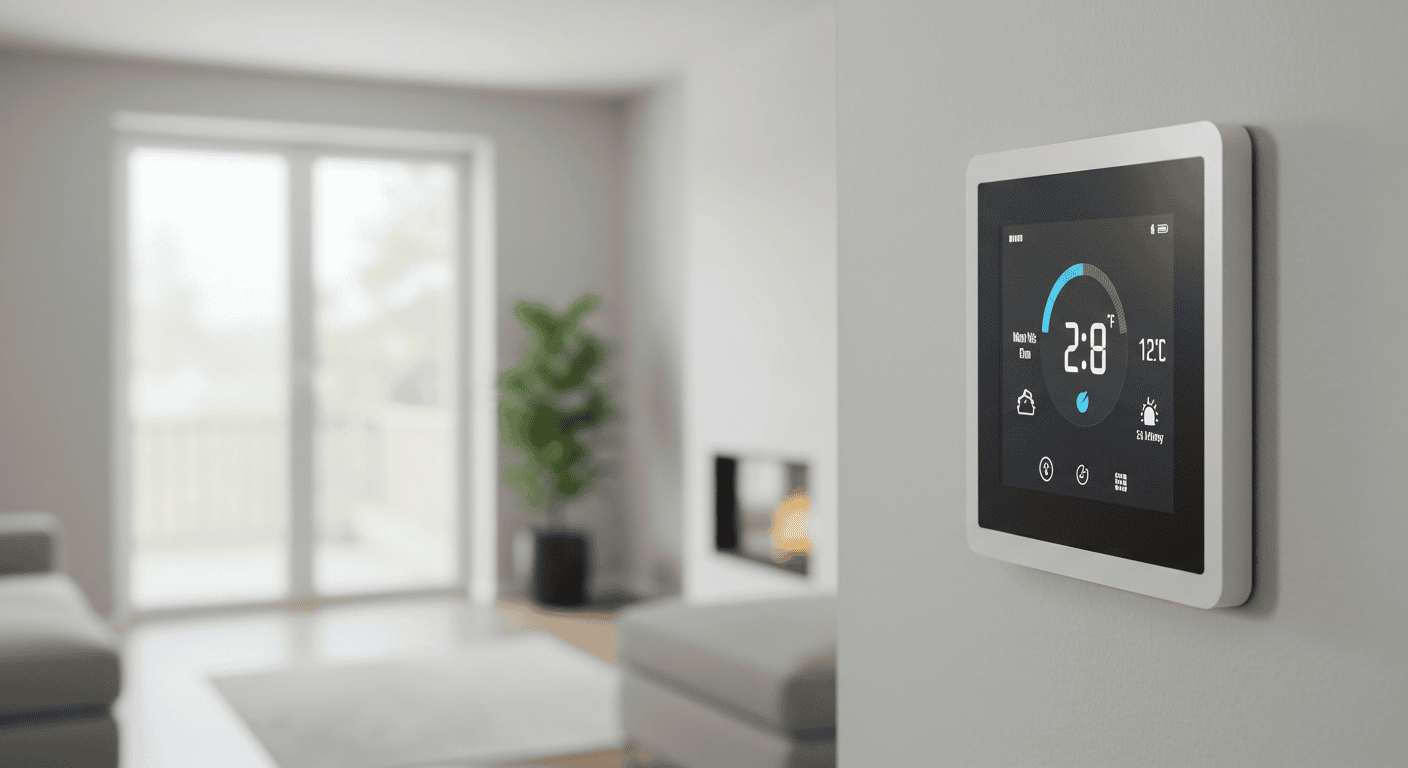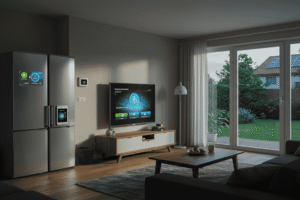Thermostat settings play a crucial role in managing your home’s energy consumption and lowering utility costs. By optimizing how you use your thermostat, you can significantly reduce your energy bills without sacrificing comfort. In this article, we’ll explore 5 easy thermostat settings that help you save money while keeping your living space comfortable year-round. Whether you’re new to programmable thermostat settings or looking to fine-tune your current setup, these practical tips will guide you toward smarter, more efficient energy use in your home.
Why Thermostat Settings Matter for Your Utility Bills
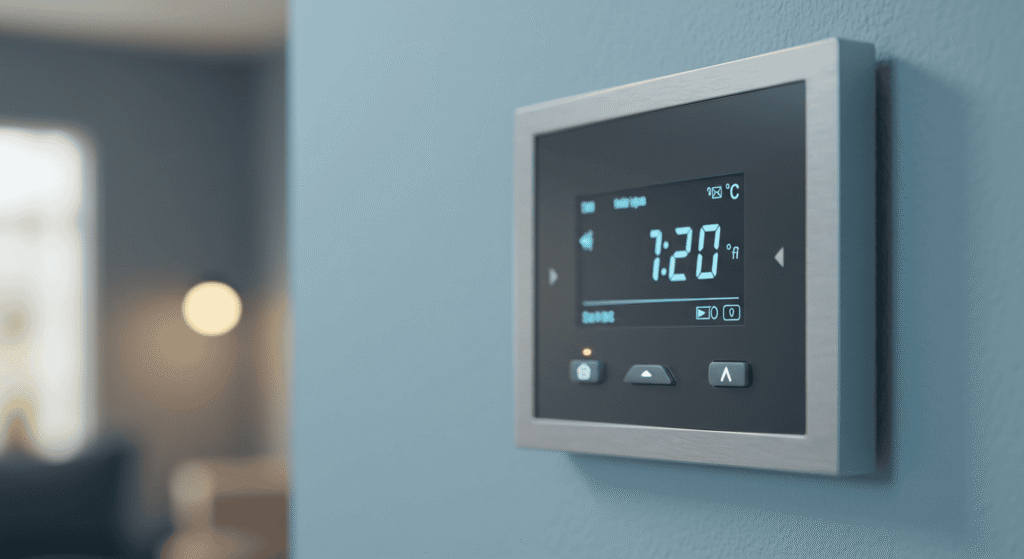
Your thermostat is one of the most important devices in your home when it comes to managing energy consumption and reducing costs. Small adjustments in your thermostat settings can have a significant impact on your utility bills without compromising comfort. Understanding why these settings matter is the first step to becoming more energy efficient and saving money in the long run.
How Small Changes Lead to Big Savings
Even a minor change in your thermostat settings—like adjusting the temperature by just one or two degrees—can translate into noticeable savings on your energy bills. For example, lowering your thermostat by 1°F during the heating season can reduce your heating costs by up to 3-5%. Similarly, raising the temperature by a couple of degrees in the summer reduces cooling costs. These small tweaks add up over time, especially when applied consistently throughout the day and night.
Here’s a simple table showing the estimated energy savings based on thermostat adjustments:
| Temperature Adjustment | Estimated Energy Savings on Utility Bills |
|---|---|
| Lowering 1°F in winter | 3% – 5% reduction |
| Lowering 2°F in winter | 6% – 10% reduction |
| Raising 1°F in summer | 3% – 5% reduction |
| Raising 2°F in summer | 6% – 10% reduction |
Understanding Your Home’s Heating and Cooling Needs
Every home has unique heating and cooling requirements based on factors like insulation, size, window placement, and climate. To optimize your thermostat settings, it’s important to understand how your home retains or loses heat and how your HVAC system responds. This knowledge helps you set your thermostat at temperatures that maintain comfort efficiently while avoiding energy waste. For instance, a well-insulated home may tolerate a wider temperature range without discomfort, allowing for more aggressive energy-saving settings.
The Science Behind Thermostat Energy Efficiency
The key to thermostat energy efficiency lies in how your HVAC system cycles on and off in response to temperature changes. Setting your thermostat to extremes causes the system to work harder and longer, consuming more energy. However, maintaining a steady, moderate temperature reduces the frequency of heating and cooling cycles, saving energy and extending your equipment’s lifespan. Additionally, programmable thermostats that adjust temperature based on your schedule help avoid unnecessary heating or cooling when no one is home, further enhancing energy savings.
The 5 Key Thermostat Settings That Save Money
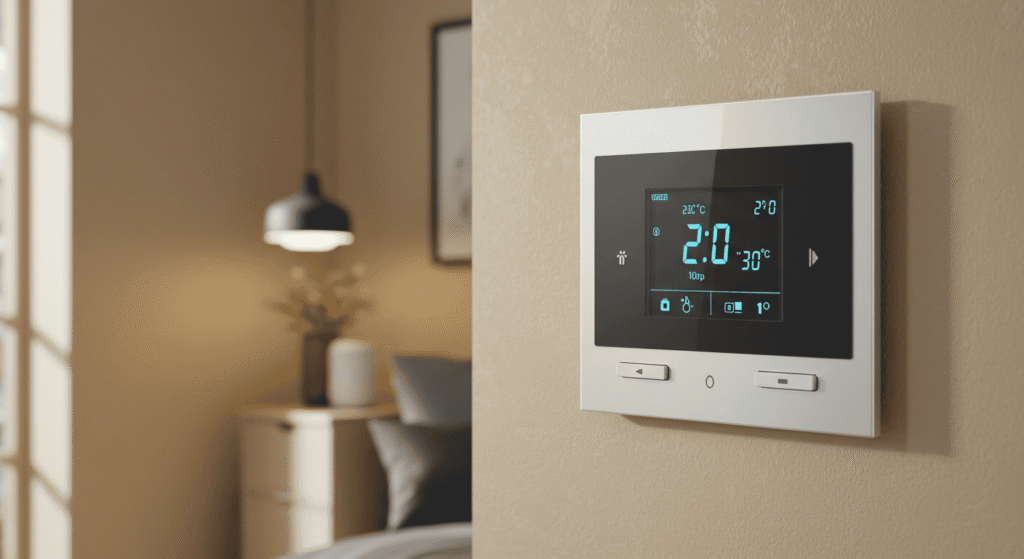
Knowing the right thermostat settings can make a big difference in reducing your energy consumption and lowering your utility costs. These five key settings are simple to implement but highly effective at balancing comfort and savings throughout the year.
Setting Your Thermostat for Winter Comfort and Savings
During the colder months, the goal is to keep your home warm enough to be comfortable without overusing your heating system. Experts recommend setting your thermostat to around 68°F (20°C) while you’re awake and at home. Lowering it by a few degrees at night or when you’re away can lead to additional savings without sacrificing warmth when you need it most.
Ideal Summer Thermostat Temperatures to Cut Cooling Costs
In the summer, setting your thermostat to a slightly higher temperature helps reduce the workload on your air conditioning system. Aim for around 78°F (26°C) when you’re at home and need cooling. When you’re away, increasing the temperature a few degrees can significantly cut down your energy use while still protecting your home from overheating.
How to Use “Setback” Periods to Maximize Efficiency
“Setback” periods are scheduled times when your thermostat automatically adjusts to more energy-efficient temperatures, such as during sleeping hours or when no one is home. Using these periods helps avoid unnecessary heating or cooling and allows your HVAC system to run less frequently. Program your thermostat to lower heat in winter or raise cooling in summer during these times to maximize your energy savings.
Here’s a colorful comparison table showing recommended thermostat settings for winter, summer, and when you’re away from home:
| Situation | Recommended Temperature (°F) | Recommended Temperature (°C) |
|---|---|---|
| Winter (Home, Awake) | 68 | 20 |
| Winter (Sleep/Away) | 60-64 | 15-18 |
| Summer (Home, Awake) | 78 | 26 |
| Summer (Sleep/Away) | 82-85 | 28-29 |
This table makes it easy to see how adjusting your thermostat based on your schedule and the season can lead to meaningful savings on your energy bills while keeping your home comfortable.
How to Program Your Thermostat Like a Pro
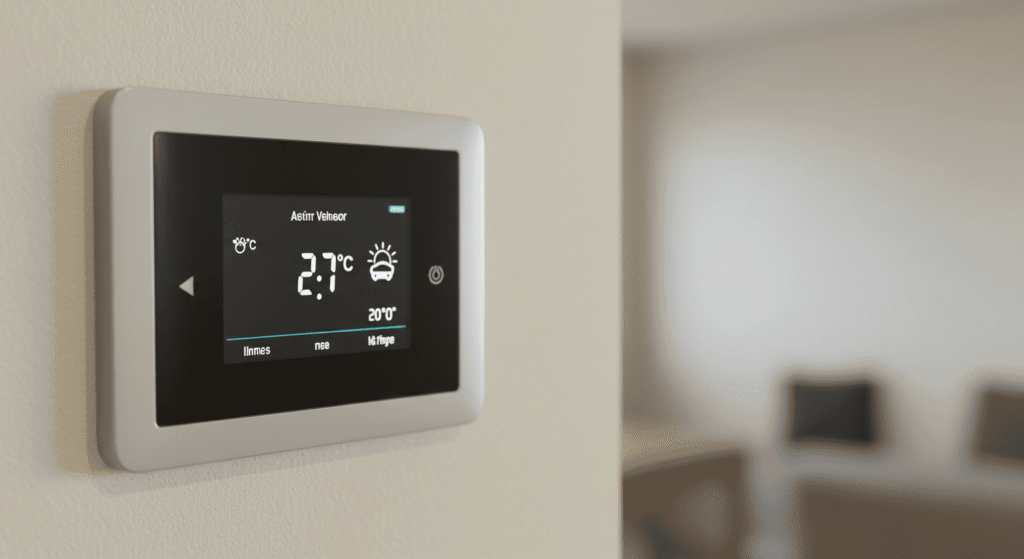
A programmable thermostat can be your secret weapon for cutting energy costs—if you know how to use it right. When programmed effectively, it adjusts your home’s temperature automatically throughout the day, ensuring comfort when needed and savings when possible. Learning to use it like a pro can turn guesswork into real results on your utility bills.
Understanding Your Thermostat’s Programming Options
Most modern thermostats offer several modes and scheduling options. At the core, you’ll usually find:
- Wake – the time you typically get up and need comfort.
- Leave – when you leave the house and energy use can drop.
- Return – when you come home and want the house at your ideal temperature.
- Sleep – when you’re in bed and can tolerate cooler or warmer settings.
Some thermostats let you program each day individually, while others group days (e.g., weekdays vs. weekends). Knowing what your model supports allows you to plan accordingly and take full advantage of its features.
Step-by-Step Guide to Scheduling Daily Temperature Changes
Want a solid starting point? Here’s how to build your schedule for both comfort and savings:
- Wake (6:00 AM – 8:00 AM)
- Winter: 68°F (20°C)
- Summer: 78°F (26°C)
- Leave (8:00 AM – 6:00 PM)
- Winter: 60°F–64°F (15–18°C)
- Summer: 82°F–85°F (28–29°C)
- Return (6:00 PM – 10:00 PM)
- Winter: 68°F (20°C)
- Summer: 78°F (26°C)
- Sleep (10:00 PM – 6:00 AM)
- Winter: 60°F–64°F (15–18°C)
- Summer: 80°F–82°F (27–28°C)
Customize times based on your routine, but keep in mind that consistency is key. Stick to patterns your thermostat can follow reliably each day.
Here’s an interactive-style fill-in-the-blank programming template you can screenshot and use to design your custom plan:
| Time of Day | Target Temp (Winter) | Target Temp (Summer) | Notes (e.g., “Work”, “Sleep”, etc.) |
|---|---|---|---|
| Wake | ______ °F | ______ °F | ___________________________________ |
| Leave | ______ °F | ______ °F | ___________________________________ |
| Return | ______ °F | ______ °F | ___________________________________ |
| Sleep | ______ °F | ______ °F | ___________________________________ |
Mistakes to Avoid When Programming Your Thermostat
Programming a thermostat is simple, but it’s easy to fall into traps that cancel out your energy-saving efforts. Avoid these common mistakes:
- Frequent manual overrides: Constantly changing the settings confuses the system and wastes energy.
- Setting it and forgetting it: Seasons change—your settings should, too.
- Overcompensating for comfort: Setting it 10 degrees colder or warmer won’t cool or heat your home faster, it just burns more energy.
- Forgetting the weekend: If your schedule changes on weekends, so should your thermostat program.
By avoiding these pitfalls and using the schedule template above, you can truly program your thermostat like a pro and start seeing the results in your next bill.
Using Your Thermostat to Improve Indoor Comfort and Air Quality

Your thermostat isn’t just about saving money—it also plays a key role in maintaining a healthy and comfortable home environment. When used wisely, it can help regulate temperature, improve air quality, and reduce issues like dry air in winter or excess humidity in summer. The key is finding the sweet spot between comfort and cost-efficiency.
Balancing Energy Savings with Comfort Needs
Everyone’s comfort threshold is different. Some prefer a cooler sleeping environment, while others feel chilly at 68°F. The trick is to find settings that keep you cozy without sending your utility bills soaring. Adjust your thermostat settings gradually until you find a level that feels right—don’t jump from 68°F to 75°F hoping for instant warmth or relief.
To help readers strike the right balance, here’s a quick Comfort vs. Cost Matrix:
| Priority | Recommended Setting | Result |
|---|---|---|
| Maximum Savings | 60°F (winter) / 85°F (summer) | Lower bills, may sacrifice comfort |
| Balanced Approach | 65–68°F (winter) / 78°F (summer) | Good comfort and savings |
| Maximum Comfort | 70–72°F (winter) / 72–74°F (summer) | Highest comfort, higher cost |
Use this as a guide to prioritize what matters most to you—budget or comfort—and adjust accordingly.
How Temperature Affects Humidity and Air Circulation
Your thermostat indirectly controls indoor humidity levels. In winter, high heat settings can dry out the air, leading to dry skin, irritated sinuses, and even damage to wooden furniture or floors. Conversely, in summer, too much cooling can create excess humidity if your air conditioner cycles too quickly without fully dehumidifying the air.
To improve air circulation and moisture balance:
- Use your fan setting periodically to circulate air without heating or cooling.
- Combine thermostat adjustments with natural ventilation (like opening windows on mild days).
- Avoid extreme temperatures that encourage dry or muggy air conditions.
The goal is to keep your indoor air moving and balanced, which makes your home healthier and more pleasant.
Tips to Prevent Overheating or Overcooling Rooms
Uneven heating or cooling can make certain rooms too warm or too cold, even when the thermostat setting seems right. This wastes energy and creates discomfort. Here’s how to fix that:
- Use zoned thermostat settings if available, to customize temperatures in different parts of the home.
- Keep vents and doors open to allow better airflow.
- Block direct sunlight in summer with curtains or shades.
- Seal drafts and insulate problem areas to keep temperatures stable.
A well-balanced system allows you to maintain consistent comfort across your home without cranking up the heat or AC unnecessarily.
How Seasonal Changes Affect Thermostat Settings
As the seasons shift, so should your thermostat settings. The same temperature that feels perfect in January might be uncomfortable in April. Adapting your thermostat as the weather changes helps maintain comfort, protect your HVAC system, and—most importantly—keep your energy bills in check. The trick is staying ahead of the transition instead of reacting to it.
Adjusting Settings for Fall and Spring Transitions
Fall and spring bring milder temperatures, but that doesn’t mean your thermostat can be ignored. These “in-between” seasons are a perfect time to:
- Open windows when outdoor temps are pleasant, reducing the need for heating or cooling.
- Use fans for airflow before switching on your AC.
- Gradually lower or raise the thermostat to let your body and system adjust.
For example:
- In fall, start lowering the heat incrementally each week until you reach your winter baseline.
- In spring, ease off the heat and delay turning on the AC for as long as comfortable.
These seasons are the ideal time to test new schedules or experiment with energy-saving settings without sacrificing comfort.
Why Gradual Temperature Changes Matter
Rapid shifts in indoor temperature can do more than make you uncomfortable—they can shock your HVAC system and drive up energy use. Gradual adjustments allow:
- Your body to acclimate to cooler or warmer environments naturally.
- Your HVAC system to work more efficiently, avoiding sudden starts and stops.
- Better long-term comfort, as rooms don’t experience wild swings in temperature.
Instead of jumping from 72°F to 65°F overnight, reduce or increase temperatures by 1–2 degrees per day. This slow shift saves energy and avoids straining your system.
Using Thermostat Settings to Prep Your Home for Weather Swings
Seasonal transitions are a great time for thermostat “prep mode.” Before extreme heat or cold arrives, use your settings to condition your home gradually:
- In late fall, start using setback periods overnight to adjust your heating rhythm.
- In early spring, run fans or use natural ventilation to postpone AC usage.
- Test your thermostat schedule for any inconsistencies or inefficiencies.
Here’s a seasonal thermostat adjustment timeline you can screenshot, save, or print:
| Month | Suggested Action | Temperature Notes |
|---|---|---|
| March–April | Start increasing cooling setbacks (AC off when possible) | Let home warm up naturally |
| May | Finalize summer schedule | Set AC to 78°F when home, 85°F when away |
| September | Start decreasing heat settings gradually | Delay heater use until nights are consistently cold |
| October | Finalize winter schedule | Set heat to 68°F when home, 60°F when away |
By following a seasonal thermostat calendar, you stay ahead of the weather and keep your home comfortable and energy-efficient year-round.
The Role of Thermostat in Home Energy Management
Your thermostat plays a central role in managing your home’s overall energy use. It’s not just a temperature dial—it’s a tool that influences how hard your HVAC system works, how much energy you consume, and ultimately, the size of your monthly utility bills. Understanding this role empowers you to make smarter decisions that benefit both your comfort and your wallet.
How Thermostat Settings Impact Your HVAC System’s Efficiency
The way you set and program your thermostat directly affects your HVAC system’s efficiency. When the thermostat demands large, sudden temperature changes, your system has to work harder and use more energy. On the other hand, consistent, moderate adjustments help your HVAC system:
- Run smoother with fewer start-stop cycles
- Reduce wear and tear, extending its lifespan
- Maintain steady indoor temperatures that use less energy overall
Keeping your thermostat at reasonable settings and using programming options smartly helps your system run efficiently while maintaining comfort.
Coordinating Thermostat Use with Other Energy-Saving Habits
A thermostat alone won’t maximize your energy savings unless combined with other smart home habits, such as:
- Sealing windows and doors to prevent drafts
- Using ceiling fans to improve air circulation
- Closing blinds during hot summer days to block heat
- Turning off unnecessary lights and electronics
When paired with a well-programmed thermostat, these habits multiply energy savings and improve indoor comfort.
Tracking Energy Savings from Thermostat Adjustments
To see the real impact of your thermostat changes, it helps to track your energy usage month by month. This not only motivates you to stick to your settings but also reveals which adjustments yield the biggest savings.
Here’s a simple monthly energy savings tracker you can print or copy to monitor your progress:
| Month | Average Energy Usage Before Adjustments (kWh) | Average Energy Usage After Adjustments (kWh) | Estimated Savings (%) | Notes on Changes Made |
|---|---|---|---|---|
| January | ||||
| February | ||||
| March | ||||
| April | ||||
| May | ||||
| June | ||||
| July | ||||
| August | ||||
| September | ||||
| October | ||||
| November | ||||
| December |
Filling in this table over time can help you fine-tune your thermostat habits and celebrate your progress.
Troubleshooting Common Thermostat Issues That Affect Energy Use
Even the best thermostat settings won’t save energy if your thermostat itself isn’t working properly. Faulty or poorly calibrated thermostats can cause your HVAC system to run inefficiently, wasting energy and driving up your bills. Knowing how to spot and fix common problems keeps your system running smoothly.
Signs Your Thermostat Isn’t Working Properly
Watch for these warning signs that your thermostat might be malfunctioning:
- Temperature readings don’t match actual room temperature
- HVAC system cycles on and off too frequently
- The system won’t turn on or off as expected
- Unusual noises or delays after adjusting settings
These symptoms often indicate sensor errors, wiring problems, or simple calibration issues.
Quick Fixes to Restore Accurate Temperature Control
Many thermostat problems can be fixed with easy steps:
- Reset or recalibrate your thermostat following the manufacturer’s instructions (usually found in the manual).
- Replace batteries if your thermostat is battery-powered.
- Clean the thermostat by gently dusting sensors and vents to avoid false readings.
- Check wiring connections to ensure they’re secure and free of corrosion.
- Reprogram your thermostat to clear any faulty schedules or settings.
Trying these fixes first can save you time and avoid unnecessary service calls.
When to Call a Professional for Thermostat Problems
If quick fixes don’t solve the issue or you notice persistent problems like:
- No power to the thermostat
- Faulty wiring or circuit breaker trips
- HVAC system running constantly without response to thermostat changes
- Complex programming or compatibility issues
It’s time to call a professional HVAC technician. Proper diagnosis and repair ensure your system runs safely and efficiently.
Here’s a problem-solution table summarizing common thermostat issues, their causes, and quick fixes:
| Symptom | Possible Cause | Quick Fix |
|---|---|---|
| Temperature doesn’t match room | Dirty sensors or poor calibration | Clean sensors; recalibrate thermostat |
| HVAC cycles too frequently | Incorrect temperature setting or faulty sensor | Adjust settings; reset thermostat |
| System won’t turn on/off | Dead batteries or loose wiring | Replace batteries; check wiring |
| Delayed response to adjustments | Software glitch or old thermostat | Reboot or reprogram thermostat |
| Unusual noises | Mechanical issues or wiring problems | Call professional if persistent |
This table can help you quickly identify and address thermostat problems that impact energy efficiency.
Beyond Settings: Other Smart Habits to Maximize Thermostat Efficiency
Optimizing your thermostat settings is just one piece of the energy-saving puzzle. Combining smart habits with your thermostat’s operation can significantly boost your home’s overall efficiency and comfort. These extra steps help your system work smarter, not harder, and keep your energy bills lower without sacrificing convenience.
Using Natural Light and Ventilation to Support Thermostat Settings
Harnessing natural elements can reduce your reliance on heating and cooling:
- Open curtains and blinds during sunny winter days to let in warmth naturally.
- Close window coverings in summer to block out heat and keep rooms cooler.
- Use cross-ventilation by opening windows strategically to cool your home on mild days without running the AC.
By syncing these natural methods with your thermostat, you ease the load on your HVAC system and maintain comfort more sustainably.
Pairing Thermostat Control with Smart Home Energy Devices
Modern smart home devices can enhance your thermostat’s efficiency through automation and monitoring:
- Smart fans and ceiling fans can circulate air efficiently, supporting temperature regulation.
- Smart sensors placed in different rooms help your thermostat adjust settings based on actual occupancy and temperature zones.
- Energy monitoring plugs and smart meters track consumption, allowing you to identify patterns and adjust habits accordingly.
Integrating these devices helps create a cohesive, responsive system that maximizes comfort and minimizes waste.
Simple Daily Routines to Support Your Thermostat’s Work
Small daily habits complement your thermostat settings and improve overall energy use:
- Keep doors and windows closed when heating or cooling is on.
- Turn off lights and electronics when not in use, as they generate heat and affect temperature control.
- Dress appropriately for the season to reduce over-dependence on thermostat adjustments.
- Regularly change HVAC filters to maintain airflow and efficiency.
Here’s a Daily Energy Saving Checklist you can follow or share:
- Adjust blinds/curtains with the sun
- Use fans before AC/heating
- Close doors/windows when HVAC is running
- Turn off unused lights and devices
- Wear season-appropriate clothing indoors
- Replace HVAC filters monthly or as recommended
- Check thermostat schedule weekly and adjust as needed
Following these habits alongside smart thermostat settings helps you achieve the perfect balance of comfort, convenience, and energy savings every day.
Mastering Thermostat Settings for Maximum Savings and Comfort
Mastering your thermostat settings is one of the simplest and most effective ways to reduce your energy bills while keeping your home comfortable year-round. By understanding how your thermostat impacts your HVAC system, using smart programming, and adopting energy-friendly habits, you can unlock significant savings without sacrificing convenience. Remember, small adjustments combined with consistent care make a big difference — and your thermostat is the key tool in managing home energy efficiently. Start applying these tips today and watch your utility costs drop while enjoying a cozier living space.





